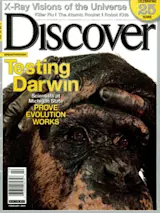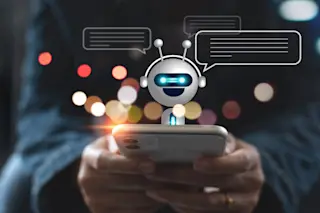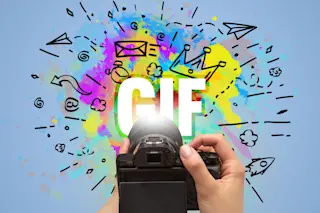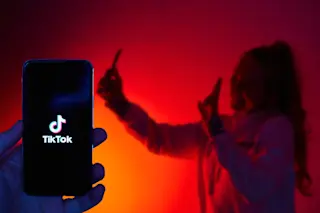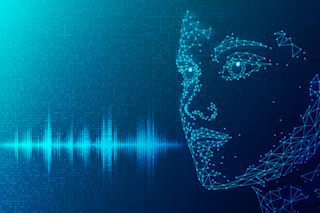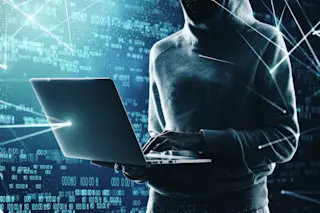This is your future, not too long from now: You’re lingering a little too long in the shower one morning, and somewhere between the first and second rinse, a tune pops into your head. You keep humming as you towel off, then stroll downstairs to your computer. With a few quick keystrokes, you record yourself singing the tune. It’s off-key, and the lyrics won’t draw an audience, but the computer doesn’t care. With a few more clicks, there’s a quartet accompanying your vocal in perfect time. And then—voilà!—it’s not you warbling anymore; it’s Sting or Joni Mitchell or Pavarotti. As you burn the track onto a CD, you say to yourself, “One of these days, I really should learn how to play an instrument.”
There is something uniquely participatory about music, something that makes us want to play along. When we visit the Guggenheim Bilbao, we don’t start furiously sketching out a new wing for the museum on a napkin. Likewise, when we attend a performance of King Lear, we don’t jot down notes for a sequel on the back of the playbill. But many of us will admit, when pressed, to doing Pete Townshend air guitar windmills as teenagers, or harmonizing with the car radio on the way to work, or mock conducting Mozart in the safety of our living room.
Of course, those Pete Townshend windmills are a lot easier to execute when you don’t actually have to hit the frets in the right places. So, for as long as popular music has been a part of society, the world has been divided into players and pretenders. But a new program from Apple Computer called GarageBand points to possibilities you could only dream about: the emergence of digital tools that help people with no musical training whatsoever create astonishingly sophisticated tracks. Can’t play an instrument? Tone deaf? The software will fix all that.
If you heard any of the hilarious remixes of Howard Dean’s “I Have a Scream” speech that proliferated on the talk-radio circuit last year, you most likely heard GarageBand at work. (In a propitious bit of timing, Apple released the software a week before the Iowa caucuses.) Thanks to GarageBand’s tools, you could create your own Dean Scream remix even if you’d never picked up a guitar or a drumstick in your life. On the many sites where GarageBand users share their creations, political commentary remains a continuing obsession. One created a lush, entirely nonsatirical string accompaniment to Al Sharpton’s speech at the Democratic convention; another spliced together dozens of George Bush’s malapropisms over a country-and-western tune.
How can nonmusicians create music? GarageBand borrows a page from the playbook followed by most rap and hip-hop artists during the past two decades: The software uses samples and sound loops as the core building blocks for each song. Loops are short sequences of music that have been recorded and edited and then combined with other loops in unpredictable ways. A loop might be eight bars of a drumbeat, an acoustic guitar strumming a G minor chord, the blast of a horn section, or the sound of a presidential candidate losing it on national television.
GarageBand comes with thousands of loops that reflect an entire record store’s worth of genres—electronic beats, Motown bass lines, country shuffles—or you can record your own. Creating a song feels more like painting than jamming. You pick the loops you find interesting and draw them out on the screen. Alter the tempo of the song, and the software automatically adjusts the loop to keep it in time. Want your virtual pianist to drop into C minor for the bridge? Select the loop, drag a slider, and the chords change automatically. The loops that come with GarageBand are in the public domain, so if you happen to concoct a Billboard chart topper, you won’t owe anyone royalties.
If you’re skilled enough with a PC interface to copy files from one folder to another, you’re skilled enough to compose a song in GarageBand. And if you actually know how to play an instrument, the software becomes more powerful. Thanks to GarageBand’s built-in effects, you can trigger a virtual orchestra via an attached keyboard or transform your basement guitar strumming into a blaring Pearl Jam solo performed at Madison Square Garden. Similar tools have been available to professionals for some time, but GarageBand opens the stage door to singing-in-the-shower types.
There are limits, however. If you’re intent on being the lead singer in your virtual band and you can’t hold a tune, your otherwise professional recording will invariably sound like just another session of woeful karaoke. Yet even that flaw will soon change, thanks to the wonders of pitch-correction software. A program called Melodyne, targeted at the professional audio market but no doubt headed toward hobbyists, does for your singing what spell-check does for term papers. You croon a few verses into a microphone, and Melodyne plots the notes you sang against a standard musical scale. Then you select the option for Note Snap, and with a single click, the software corrects the pitch of each snippet of audio so that your vocals are perfectly in tune. You can even copy a refrain, drag it up or down a few notes, and create harmony without singing another line.
Pitch-perfect songs are just the beginning. Say your song calls for an ethereal, Enya-style female vocal rather than your Elvis Costello-with-a-cold drone. That’s where a product called Vocaloid comes in handy. Originally designed by Yamaha, Vocaloid allows you to enlist the services of a singer in a box. Building on the tradition of music synthesizers that can convincingly re-create the sounds of a string ensemble or a brass band, Vocaloid makes it possible to re-create the sound of the human voice—singing melodies and words that you define. Audio engineers have painstakingly recorded professional vocalists singing combinations of 2,500 phonemes, the core sounds that make up a language, and sampled those combinations at multiple points in the musical scale. The resulting collection of audio snippets creates what the Vocaloid developers call fonts. Just as a traditional typographic font contains instructions for reproducing all the letters in the alphabet in a particular style, a Vocaloid font contains instructions for reproducing sounds in the style of a specific singer.
Once you’ve installed a Vocaloid font on your PC, you define a melody, either by importing a kind of digital sheet music called MIDI or by manually entering the notes on a scale. Then you type in the lyrics, using special commands to control expression. For example, you can add a glissando transition from one note to another in much the same way you add italic formatting to a word processor document. Finally, once you’ve defined all the variables, the Vocaloid software sings your tune back to you.
So far, the range of Vocaloid fonts is limited to three generic English-speaking singers and one Japanese singer. The samples I’ve heard have a not-unpleasant hybrid quality to them: somewhere between a real vocal track and the automated voice you get when dialing information. As the software improves and the library of fonts expands, the Vocaloid approach will no doubt become irresistible to those who harbor musical ambitions but who nonetheless get alarmed looks while belting out the national anthem at baseball games. Perhaps famous singers will license their voices to Vocaloid’s creators, just as they license traditional recordings of their voices to record companies.
For the time being, Melodyne and Vocaloid require a steeper learning curve than GarageBand. But user-friendly versions are inevitable. Five years from now, someone who has never played an instrument and can barely sing “Happy Birthday” will be recording songs that rival some pop tunes on the radio.
Purists scoff. You can’t experience the joys of playing music, they say, without actually playing music. And the feeling of painting loops into GarageBand doesn’t correspond to the feeling of playing a live instrument with other musicians. Both experiences can be fascinating and fun, but they’re as different as the process of typing out instructions for Vocaloid and singing a melody yourself. To me, this is where Apple’s GarageBand metaphor misleads. Yes, these new software tools have some of the do-it-yourself spirit of the classic garage band, annoying the neighbors with the endless double-time “Louie Louie” covers. But when you’re assembling your GarageBand loops or auditioning your Vocaloid singers, the role you’re implicitly taking on is more producer than musician. You’re closer to George Martin or Phil Spector than you are to Paul McCartney or Tina Turner. The challenge lies in assembling musical sequences played by other people, creating new combinations of sounds or genres in the process.
Until GarageBand came along, hobbyists could experience something of the feeling of being a professional musician by learning to play guitar or dabbling with a synthesizer. But the fun and challenge of producing records—assembling a striking combination of instruments, getting the mix just right—was much harder to approximate. Now that experience is within reach, and it turns out to have great appeal. Of course, these homespun Spectors would no doubt prefer to have McCartney or Turner singing for them in the studio, and perhaps Vocaloid or its descendants will eventually supply those famous voices. But for the time being, Howard Dean will do.



